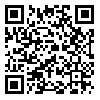Volume 12, Issue 2 (2012)
QJER 2012, 12(2): 61-92 |
Back to browse issues page
Download citation:
BibTeX | RIS | EndNote | Medlars | ProCite | Reference Manager | RefWorks
Send citation to:



BibTeX | RIS | EndNote | Medlars | ProCite | Reference Manager | RefWorks
Send citation to:
Nasrolahi Z, Farzanegan M R, Talei Ardakani S. Shadow Economy Trends in Iran A Comparative Study Using Amos and Lisrel. QJER 2012; 12 (2) :61-92
URL: http://ecor.modares.ac.ir/article-18-6724-en.html
URL: http://ecor.modares.ac.ir/article-18-6724-en.html
1- Assistant Professor of Economics, Yazd University
2- Researcher at European Economic Studies
3- M.A. Student of Economics, Yazd University
2- Researcher at European Economic Studies
3- M.A. Student of Economics, Yazd University
Abstract: (8664 Views)
In this article, after defining a conceptional framework for defining and measuring shadow economy in Iran a close attention is also paid to a more precise definition of shadow economy itself. It is also tried to estimate it's changing process and size during 1975-2007 based on the new definition. Direct and indirect approaches are also briefly discussed to estimate the shadow economy. Then, the strengths and weaknesses of each method are pointed out. So far, almost all of the researches carried out in Iran regarding estimation of shadow economy have mainly focused on structural equation modeling approach using Lisrel. Here in this paper for the first time both structural equation modeling software programs of Amos Graphics and Lisrel are applied to estimate the shadow economy in Iran. A comparison of the process and output of both software packages is also done in this research. Finally, in addition to investigating the direct effects of the causal variables, the interactional effects of them on latent variable of the shadow economy are also analyzed.
Keywords: Shadow Economy, Multiple indicators, C61, C61, O17, O17, Structural Equation Modeling, Multiple causes model, Amos graphics software, Lisrel software
JEL Classification: E26
Received: 2010/10/24 | Accepted: 2011/09/15 | Published: 2012/06/30
| Rights and permissions | |
 |
This work is licensed under a Creative Commons Attribution-NonCommercial 4.0 International License. |







